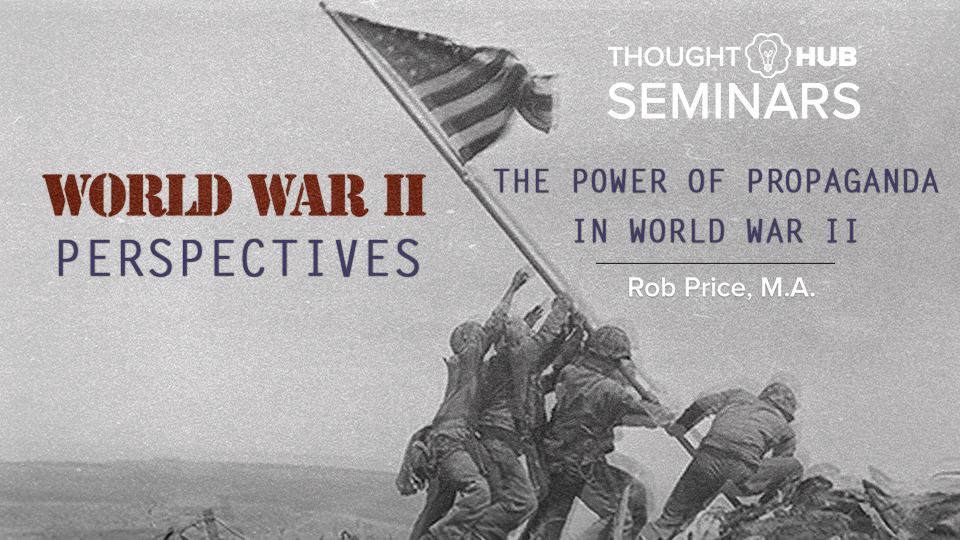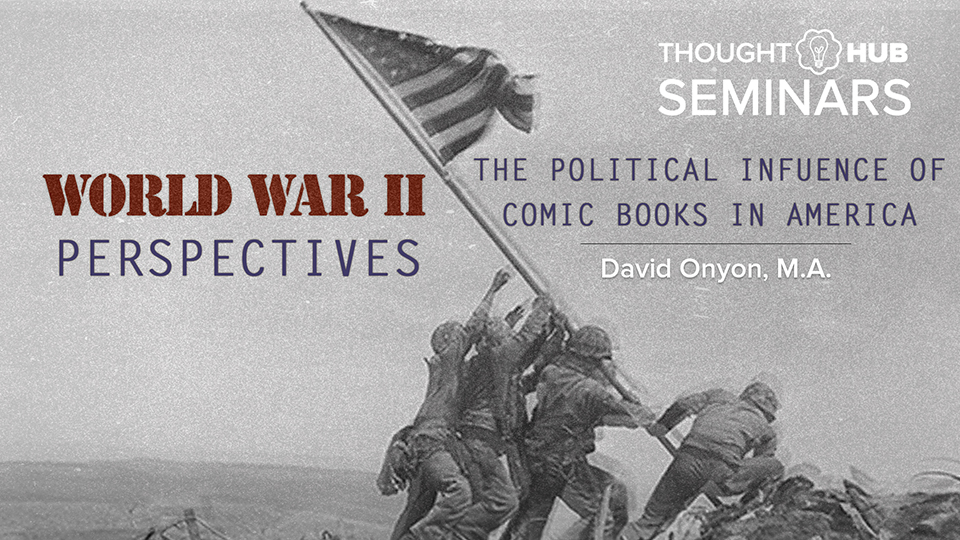Today, there seem to be more and more articles and books either defending or castigating local churches on the issue of their size. Some applaud the large church in such a way that the smaller church seems unnecessary and without a future, while others defend the merits of the small church and treat the larger congregation with contempt and suspicion. It seems we are determined to find a side to fight for somewhere between the house churches of Acts 2 and the massive modern churches in Southeast Asia.
In a world before social media and the internet, how did the United States encourage and promote American citizens in the 1930s and 1940s to contribute to the war effort? The answer-propaganda and lots of it. While propaganda took many forms, perhaps its strongest and the most effective channel was Hollywood films. In this Thought Hub vlog, Rob Price, M.F.A., shares the impact of these films in America during this era and how many young filmmakers put their careers on hold to contribute to the war effort.
Did you know that comic books were used as propaganda during World War II? While adults were targeted through posters and short films that were shown before movies, American children were targeted through some of our most prominent superheroes to date such as Captain America, Superman, Batman and several others. These superheroes embodied the ideal virtues of American soldiers and demonstrated the courage and resolve needed to fight evil during World War II. In this vlog, David Onyon, SAGU History Professor, discusses how the effort to win WWII went hand-in-hand with comics.
Not all of Tolkien’s languages were as fully developed as Sindarin and Quenya. One language’s lack of development is explained through another real-world language attribute – sociolinguistics. The dwarves of Middle-Earth had one language, made for them by the Valar Aulë. This language is Khuzdûl. Tolkien’s dwarves were a rather xenophobic race. As such, they preferred to learn the languages of others rather than teach their language to anyone. Thus, the dwarves spoke Sindarin and Westron whenever they were among the other races and kept their own language secret. This cultural attribute of the dwarves directly affected their language and how much of the language that Tolkien actually had to develop. An example of the dwarves’ multilingualism can be seen in the Sindarin, not Khuzdûl inscription over Moria’s gate.
Not only did Tolkien weave real-world words and sounds into his constructed languages, but he also wove real-world legends into his languages and tales. These tales often initially wound their way into the story through the use of a name as seen in his previous quote: “To me a name comes first, and the story follows.” Several names did not originate in the languages and cultures that he invented, but instead came from his reading of old literature as a philologist and academic. One of these names, possibly one of the first to influence his legendarium was Eärendil. Tolkien found this name in the Old English poem Crist. He was fascinated by these two lines:
Renaissance: The Power of the Gospel However Dark the Times by Os Guinness is an instant classic that captures Western culture in a way that only Os Guinness is equipped to do. Guinness uses his prophetic voice to alert the Church to its worldly and compromised trajectory. What makes Guinness unique as a social critic is his gospel-centered optimism that fuels his strategy for turning the ship around. Renaissance is a plea to Christians to pledge their service and hope toward kindling a modern renaissance in the face of a collapsing, dark world.





